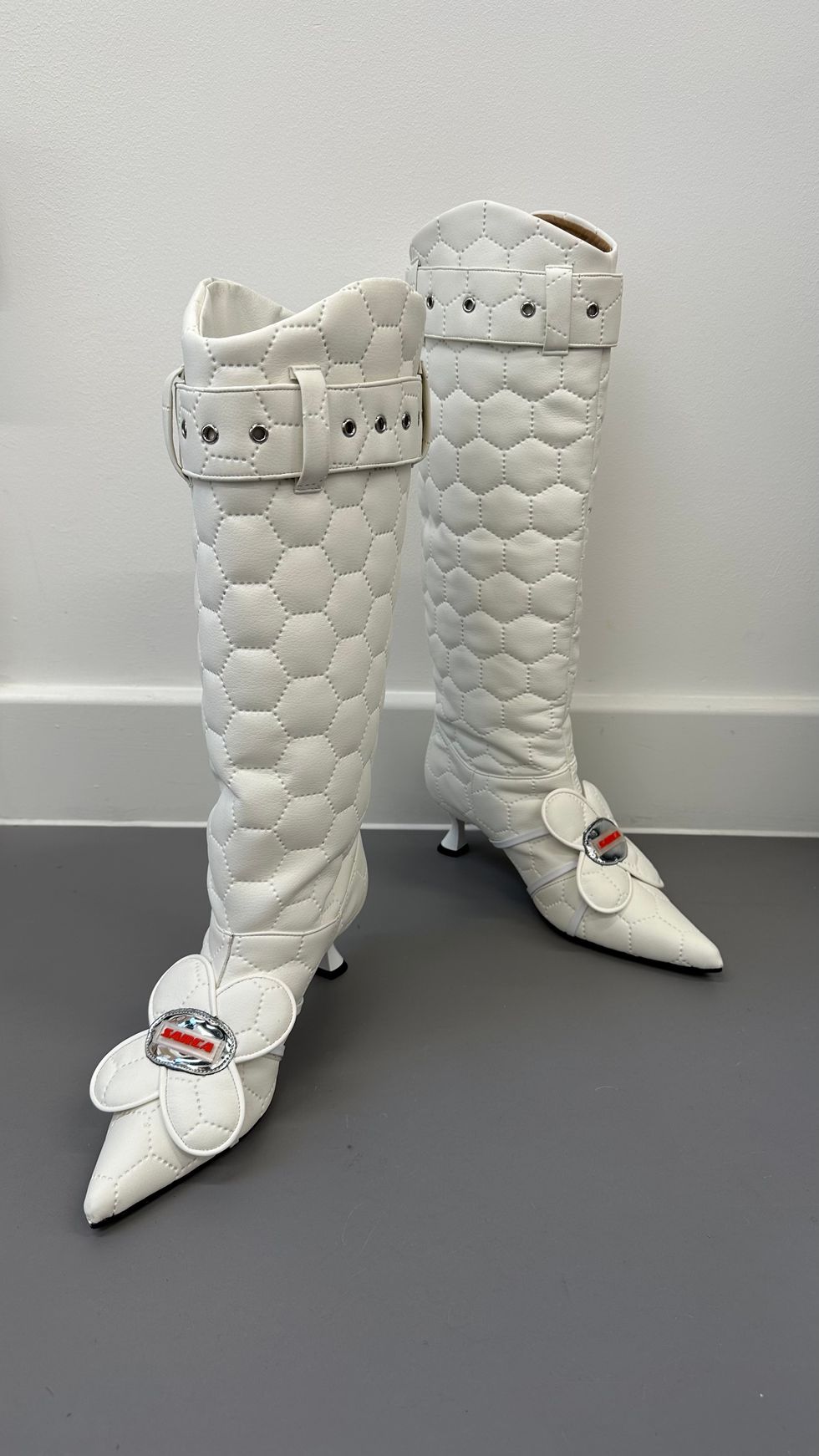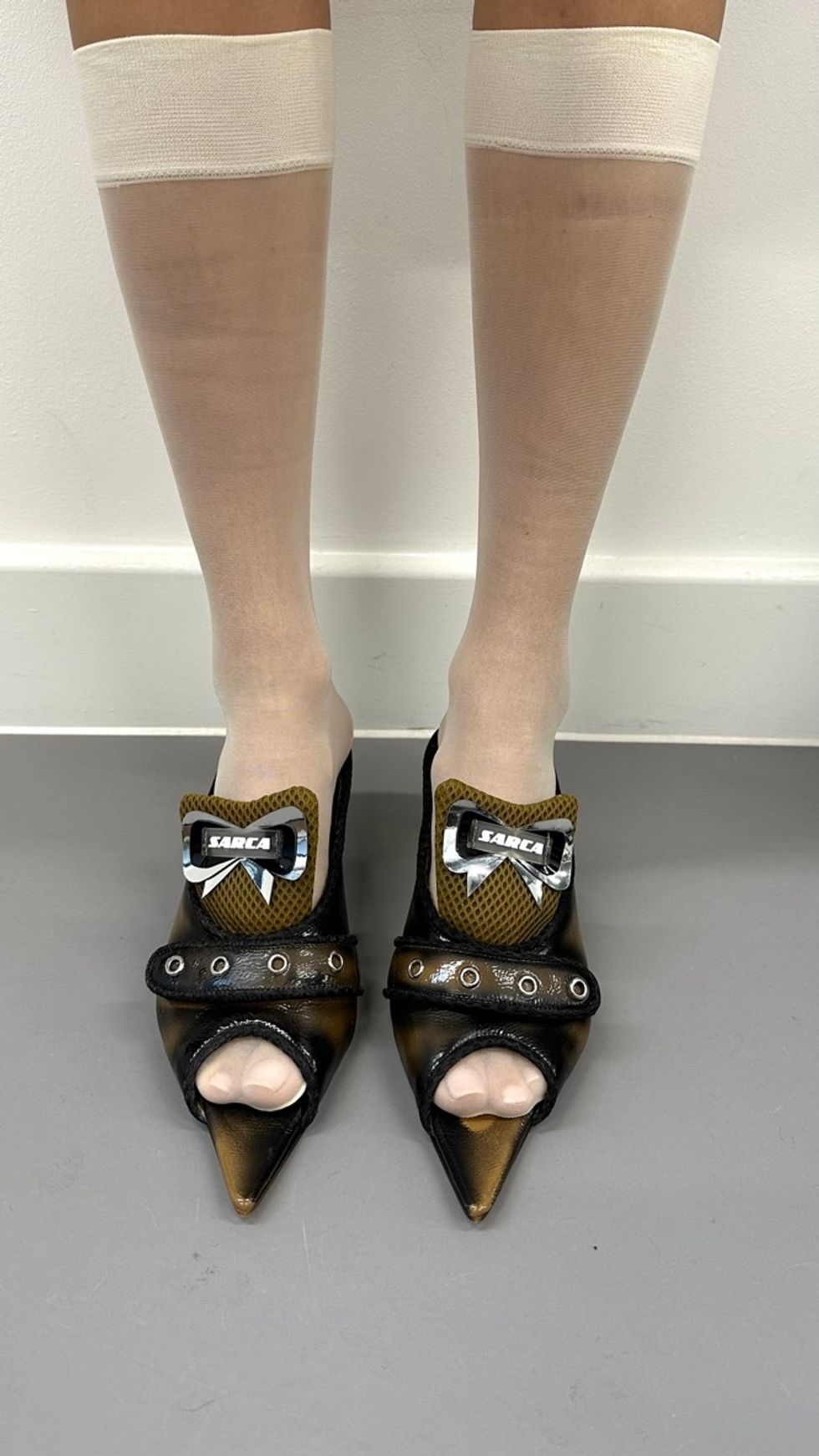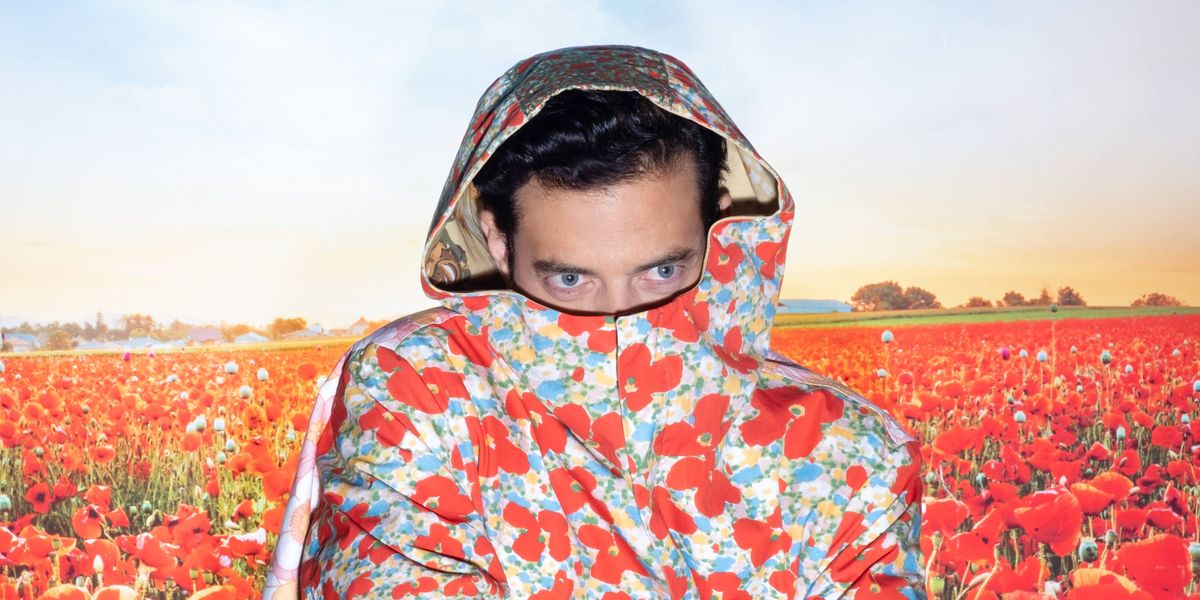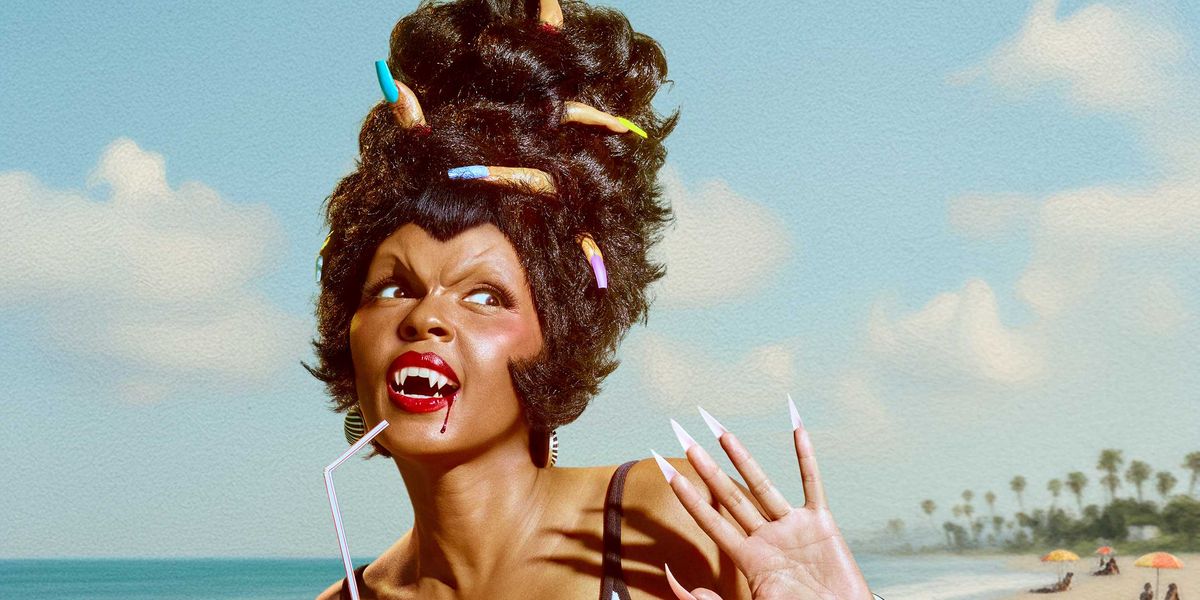
Ancuta Sarca Transforms Football Cleats Into Heels
Story by Lars Lala
May 20, 2024
If dismantling the patriarchy could be a shoe, they would for sure look like something designed by Ancuta Sarca. Sneakers and football cleats turned into heels sends a very clear message: women are the future — conform and embrace your felinity or get lost. At least that’s the message I, very conveniently, am getting from the Romanian designer’s incredible work.
As a testament to the truly originality of her designs, she was given the Emerging Talent Award at the 37th Footwear Achievement Awards last year and her shoes have been sported by the likes of Doja Cat, Bella Hadid, Rihanna, SZA and many more. However, one icon, legend, queen mother stands out: Cher! In fact, the goddess tweeted her Ancuta Sarca heels on Twitter to much controversy amongst her followers: proof that Sarca is truly changing the game and making her mark on culture.
Who are you?
I was born and raised in Romania. When I was 14 years old, I started studying art at an arts high school in Satu Mare, a small city near my hometown. During this time, I decided to pursue fashion and apply for womenswear at The Art and Design University in Cluj-Napoca in Romania where I did my BA and MA.
During my Master’s, I came to London on a scholar bursary to do a seven-month internship for Meadham Kirchoff, and soon after that, I got a job as a womenswear designer at Ashish so I moved to London in 2015. Coming from a working class family in the Romanian countryside meant that books, magazines, music and films were my only way to learn about the fashion industry.
Why shoes?
My background is in apparel, I studied womenswear in Romania and worked as a womenswear designer for a few years before I started my shoe brand. I just love to make things, whether clothes or shoes. But what I really love about shoes or heels in particular, is that they elevate the way you move. They direct your body language.
And as a designer, what I love about designing shoes is that it’s very close to sculpting. I feel closer to making art when I make shoes because it’s less drape-y, but more like a sculpture. Shoes are a very statuesque and structured object that somehow gives me more control when I design.
What was your first experience with heels?
My older sister's heels. My sister is six years older than me, so when she was a teenager and stared wearing platforms or heels, I was always sneakily trying them on when she wasn’t at home, and the first thing I loved about them was the noise that they make when you walk. It’s like you make yourself heard in someway.
How do heels empower the wearer?
Heels have this very visible power of changing your posture when you walk, when you stand up. It really makes you more confident and contribute to a sense of grace and empowerment. It’s not just about the physical appearance, but the mindset and instilling a sense of confidence.
Why make sneakers into heels?
I love heels, and I love the detailed elements on sneakers. I wanted to merge this idea of sportswear and luxury, masculine and feminine, especially with the football boots and heels. There is something that fascinates me about placing a sporty and masculine product in a feminine and glamorous world. I love the comfortable aspect of the sneakers, which is infused into the heel silhouette, and transforming the sneaker from just a practical shoe to a chic and sexy shoe.
Is there a deeper reason for upcycling sneakers into heels?
Historically, I think sneakers, or sportswear in general, were mostly associated with men's style. Think about all the collaborations in the past with male athletes or male musicians representing sneakers brands. Of course, things have changed, but I still think there is something empowering in deconstructing men's sneakers or football boots and putting them on a heel.
From a technical point of view, sustainability is at the core of the brand. I work with deadstock trainers that people don’t wear anymore, or with deadstock leathers that we purchase from a warehouse in Italy that has leftovers from other brands. So mostly every material going into the shoes are either deadstock or a recycled product. My production process includes a long list of steps until the final product is made. I source the trainers one by one, which takes one to two months, then we deconstruct them and clean them here in London. Then we ship them to the factory in Italy where they make everything else.
Who is your heel-wearing icon?
Carrie Bradshaw — the way she was wearing heels and the way she loved heels and treasured them is like no one else.
How many pairs of shoes do you own?
About 100 pairs.
Who is your favorite person who’s ever worn your shoes?
Cher. No one can beat that. She’s been in my research books since I started studying fashion and always had such an impact on fashion designers. Her style’s been an inspiration for a lot of us. So seeing her wearing my shoes, it’s like the most surreal thing that’s happened to me.
What is the future for the brand?
Focusing more on growing my team. Currently its super, super small. Expanding into apparel, bags and a wider range of product. And sales-wise, focusing more on direct-to-consumer, as until this point, we were mainly selling through wholesale channels.
It feels like a very uncertain time for a small business like mine and feels like it’s time for rethinking everything ... showing at London Fashion Week, wholesale. It's time to reconsider and replan.
Do you envision more men wearing heels in the future?
I do envision more men wearing heels. I have a lot of male clients, which makes me think that the perception is already shifting, and maybe not shifting, but actually just going back in time to Louis XIV of France who was wearing heels.
Photos courtesy of Ancuta Sarca
From Your Site Articles
Related Articles Around the Web
MORE ON PAPER
Entertainment
Rami Malek Is Certifiably Unserious
Story by Joan Summers / Photography by Adam Powell
Story by Joan Summers / Photography by Adam Powell
14 November
Music
Janelle Monáe, HalloQueen
Story by Ivan Guzman / Photography by Pol Kurucz/ Styling by Alexandra Mandelkorn/ Hair by Nikki Nelms/ Makeup by Sasha Glasser/ Nails by Juan Alvear/ Set design by Krystall Schott
Story by Ivan Guzman / Photography by Pol Kurucz/ Styling by Alexandra Mandelkorn/ Hair by Nikki Nelms/ Makeup by Sasha Glasser/ Nails by Juan Alvear/ Set design by Krystall Schott
27 October
Music
You Don’t Move Cardi B
Story by Erica Campbell / Photography by Jora Frantzis / Styling by Kollin Carter/ Hair by Tokyo Stylez/ Makeup by Erika LaPearl/ Nails by Coca Nguyen/ Set design by Allegra Peyton
Story by Erica Campbell / Photography by Jora Frantzis / Styling by Kollin Carter/ Hair by Tokyo Stylez/ Makeup by Erika LaPearl/ Nails by Coca Nguyen/ Set design by Allegra Peyton
14 October
Entertainment
Matthew McConaughey Found His Rhythm
Story by Joan Summers / Photography by Greg Swales / Styling by Angelina Cantu / Grooming by Kara Yoshimoto Bua
Story by Joan Summers / Photography by Greg Swales / Styling by Angelina Cantu / Grooming by Kara Yoshimoto Bua
30 September
Music
Demi Lovato Is No Joke
Story by Ivan Guzman / Photography by Jason Renaud / Styling by Chris Horan/ Makeup by Loftjet / Set design by Allegra Peyton
Story by Ivan Guzman / Photography by Jason Renaud / Styling by Chris Horan/ Makeup by Loftjet / Set design by Allegra Peyton
15 September


















